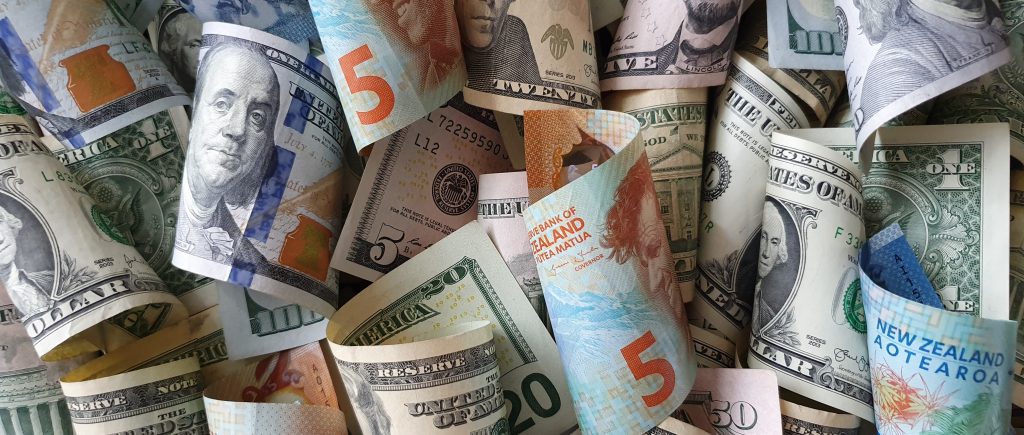Federal Reserve Chairman Jerome Powell testified before the Senate Committee on Banking, Housing, and Urban Affairs on “the semiannual monetary policy report to congress” Wednesday.
Earlier this month, the Fed hiked rates by 75 basis points, or 0.75 percentage point. “Clearly, today’s 75 basis point increase is an unusually large one, and I do not expect moves of this size to be common,” Powell said then. He added, however, that he sees the central bank raising rates by another 50 or 75 basis points next month.
“Fed is strongly committed to bringing inflation back down, moving expeditiously to do so.”
“Pace of future rate increases will continue to depend on incoming data and evolving economic outlook.”
“We will make our decisions meeting by meeting.”
“Essential that inflation be brought down if US Ii to have a sustained period of strong labor market conditions that benefit all Americans.”
“We need to get supply and demand back in better balance.”
“Financial markets have been functioning well, banking system is very strong, well-capitalized.”
“Liquidity in the treasury market has come down from where it was; looking at ways to address that.”
“US is on an unsustainable fiscal path.”
“There’s a problem with longer-term housing supply.”
“Housing market is slowing down to some extent now due to higher mortgage rates.”
“Growth this year should still be fairly strong.”
“We are trying to moderate demand so inflation can come down.”
“We can’t fail on getting inflation down.”
“Would be reluctant to cut rates.”
There were 229,000 initial jobless claims in the week ending June 18. This print followed the previous week’s print of 231,000 and came in slightly higher than the market expectation of 227,000. Further details of the publication revealed that the advance seasonally adjusted insured unemployment rate was 0.9% and the 4-week moving average was 223,500, an increase of 4,500 from the previous week’s revised average.
The University of Michigan’s Consumer Sentiment Index declined to 50 in June’s final reading from 50.2 in the flash estimate. This marked the lowest print on record. Further details of the survey revealed that the Current Conditions Index dropped to 53.8 in June from 63.3 in May and the Consumer Expectations Index fell to 47.5 from 55.2.
The US dollar fell on Friday and looks set to post its first weekly decline this month as traders scaled back their expectations of markets where interest rates might peak and shifted their focus to the timing of rate cuts to counter a possible recession.
An important factor this week was the drop in oil and commodity prices, which eased inflation concerns and allowed stock markets to rebound. This led to the erosion of the safe-haven status that had been supporting the dollar against the other major currencies.
In late morning trading in New York, the dollar index, which measures the performance of the US currency against a basket of six major currencies, fell 0.3 percent to 104.06.
The dollar, considered a safe haven, fell further after data showed that new home sales jumped 10.7 percent to a seasonally adjusted annual rate of 696,000 units last month.
The dollar, which has risen about 9 percent this year, lost some of its luster after investors began betting that the Federal Reserve could slow the pace of interest rate tightening after another 75 basis point increase in July. They now see rates peaking in March at around 3.5 percent and dropping by about 20 basis points by July 2023.
The interest rate hike brought 10-year Treasury yields to their lowest in two weeks, while the dollar index fell 0.5 percent this week.
The Japanese yen, particularly sensitive to changes in US Treasury yields, fell 0.2 percent to 135.20 per dollar.
The euro rose 0.2 percent to $1.0574.
The decline in the US dollar even boosted commodity-linked currencies such as the Australian dollar and the Norwegian krone. The Australian dollar rose 0.7 percent to $0.6944, although it is still on track for a third consecutive week of decline.
The Norwegian krone was up 1 percent at 9.871 per dollar. The Swiss franc touched its highest level since early March against the euro at 1.0055, up 0.5% on Friday.
Europe
European shares rose on Friday, boosted by the utilities and healthcare sectors after hitting their lowest level in 2022, as investors turned to safer bets amid growing fears of tight monetary policies and rising inflation that could result in a global recession.
At the end of a week that witnessed volatile transactions, the European Stoxx 600 index rose 0.6 percent, and is heading towards recording small weekly gains, supported by defensive sectors such as health care and communications.
Shares of German online fashion retailer Zalando plunged 16.8 percent to its lowest level in more than three years after the company cut its forecast for 2022, citing worsening macroeconomic conditions and consumer confidence.
Italy’s Saipem fell 6.3 percent after the energy services group said its financial resources will be available for less than a year if its plans to raise capital fail.
Barclays (LON:BARC) shares rose 0.2 percent after the bank announced a deal to acquire Kensington Mortgage Company to extend its influence in the British housing market.
Oil
Oil prices rose at the conclusion of the trading session on Friday, by more than three dollars a barrel, supported by a lack of supply, but it recorded its second weekly decline amid fears that higher interest rates will push the global economy into recession.
Brent crude closed up $3.07, or 2.8 percent, at $113.12 a barrel by 12:10 pm EST (1610 GMT). US West Texas Intermediate crude settled at $3.35, or 3.2 percent, at $107.62.
Friday’s survey showed that US consumer confidence hit a record low in June even as inflation expectations improved slightly.
Federal Reserve Chairman Jerome Powell said Thursday that the US central bank’s commitment to curb inflation is “unconditional,” raising concerns about additional interest rate hikes that will cast a shadow over financial markets.
The Russian invasion of Ukraine has exacerbated supply shortages this year as demand recovered from the Covid pandemic, and oil approached an all-time high of $147 set in 2008.
Crude prices rose due to the almost complete shutdown of production in Libya, a member of the Organization of the Petroleum Exporting Countries, due to the unrest. Libya’s oil minister said on Thursday that the head of the National Oil Corporation had withheld production data from him, raising doubts about the numbers he released last week.
OPEC members and its allies meet in the framework of the so-called OPEC + group on June 30, and are expected to agree to stick to an earlier plan to accelerate the pace of small increases in oil production in July and August, instead of pumping more oil.
This week, US energy companies added oil and natural gas drilling rigs for the second week in a row in a record series of increases over 23 months, as exploration companies returned to their activities in light of high crude prices and calls from the government.
The latest weekly US oil stockpile numbers, which will give a glimpse of tight supply in the largest consumer, have been postponed to next week due to technical problems.
Gold
Gold prices increased on Friday with the decline of the dollar and the escalation of economic concerns, but the ongoing struggle for the yellow metal with expectations that the Federal Reserve will raise interest rates strongly kept it on the path of recording the second weekly decline.
And gold rose in immediate transactions 0.2 percent to $ 1825.50 an ounce by 1115 GMT, after earlier touching its lowest level in a week at $ 1820.30 an ounce. US gold futures fell 0.1 percent to $1,827.10.
Gold’s gains were likely driven by a weaker dollar, said Rona O’Connell, an analyst at Stonex.
But she noted that some FOMC members are now more lenient on monetary policy as the specter of recession is gaining traction.
The dollar index fell 0.2 percent, making gold less expensive for buyers abroad.
On the second day of his testimony to Congress on Thursday, Federal Reserve Chairman Jerome Powell said the bank’s commitment to curbing inflation, which has risen to a 40-year high, is “unconditional”, even as he acknowledged that sharply higher interest rates could lead to increase unemployment rates.
Raising interest rates increases the opportunity cost of holding non-yielding gold. The Fed’s tightening of monetary policy, along with the general strength of the dollar, led gold prices to record a weekly decline of 0.7 percent.
As for other precious metals, the price of silver in spot transactions fell 0.3 percent to $ 20.87 an ounce, and platinum rose 0.9 percent to $ 914.79 an ounce.
Palladium rose 1.8 percent to $ 1877.41 and is on its way to achieving weekly gains.
 Noor Trends News, Technical Analysis, Educational Tools and Recommendations
Noor Trends News, Technical Analysis, Educational Tools and Recommendations





